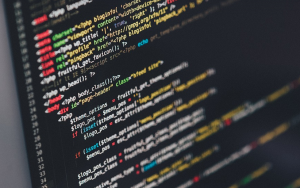
Navigating the World of Industrial Separations
Separation process engineering, a cornerstone of chemical and materials science, is all about controlling how things separate. From water droplets separating in raindrops to gigantic industrial plants filtering oil from crude, this field deals with the heart of many processes we encounter daily. But it’s much more than just simple separation—it’s a complex dance between physics, chemistry, and engineering, where understanding how things interact is key.
The 4th edition of Separation Process Engineering offers a detailed exploration of this fascinating world, providing readers with the knowledge and tools to tackle the intricate challenges of separating materials. This guide delves into the core principles behind separation processes, from simple to complex, equipping you with the skills to address real-world problems.
Think of it like this: imagine trying to separate sugar crystals from a muddy river. You’d need to understand the water properties (density, viscosity), how much force is needed to move things, and even what kind of filter would be effective. This guide will walk you through the “how” and “why” behind these processes, offering invaluable insights into how separation works in practice.
Delving into the Core Principles
The 4th edition dives deep into the fundamental principles that underpin separation processes. It systematically analyzes various techniques like filtration, distillation, evaporation, crystallization, membrane separations and centrifugation, exploring their strengths and weaknesses as well as when they are best used.
For instance, filtration is a classic method where solids separate from liquids through porous media. It’s used in everything from coffee filters to industrial water treatment plants. This chapter explains the principles: particle size distribution, filter cake properties, and pressure-driven flow. Understanding this helps you choose the right filter for your specific application.
Distillation plays a crucial role in various industries from pharmaceuticals to fuels. Here, the boiling point difference between substances leads them to separate. The 4th edition delves into the mechanics of distillation—the use of heat and pressure, understanding vapor pressures, and how to optimize the process for maximum yield.
Evaporation involves the transformation of a liquid into gas by increasing its temperature or pressure. The 4th edition doesn’t shy away from the complexities of evaporation: controlling the rate of evaporation, understanding phase changes, and optimizing energy consumption.
Crystallization is another technique that utilizes specific solubility limits to separate solids based on their crystal formation characteristics. This process is especially vital in pharmaceutical production and food processing where desired purity levels are crucial. The 4th edition explores the nuances of crystallization: selecting appropriate solvents, understanding supersaturation and nucleation.
Membrane separations offer an efficient and highly selective way of separating mixtures. The 4th edition details these advanced techniques: from microfiltration to nanofiltration and reverse osmosis – exploring different types of membranes, their permeability properties, and the challenges they face in various applications.
Beyond Theory: Practical Applications
Separation process engineering isn’t just about understanding how things work; it’s about applying those learnings to real-world scenarios. The 4th edition takes you on a journey through practical applications of these techniques:
**Example Case Studies:** The book features numerous case studies showcasing real-world examples of separation processes in action. For instance, imagine separating oil and water from crude oil using a centrifuge – the 4th edition dives into the details, analyzing how this method operates and why it’s so effective.
**Designing Efficient Processes:** Readers will learn how to design efficient separation processes through simulations and calculations. The book introduces essential simulation tools for optimizing operating parameters, predicting performance, and ensuring sustainability in industrial settings.
A Comprehensive Resource for all Levels
What sets the 4th edition apart is its comprehensiveness. It caters to a diverse audience—from students seeking foundational knowledge to experienced engineers wanting to expand their expertise.
**For Students:** The book provides a solid foundation in separation principles and offers a step-by-step explanation of various techniques. It includes clear illustrations, diagrams, and practical examples to make the concepts easier to grasp.
**For Professionals:** The 4th edition dives deep into the intricacies of industrial processes, offering technical insights into advanced topics like heat transfer, mass transfer, and fluid mechanics. It equips engineers with the knowledge to tackle complex challenges in separation engineering projects.
Embarking on Your Separation Journey
Whether you’re a student exploring the world of materials science or an engineer seeking to advance your career, “Separation Process Engineering 4th Edition PDF” is the essential guide for navigating this dynamic field. This comprehensive resource empowers readers with the knowledge and skills to become leaders in separation engineering, shaping a world full of efficient separations.


